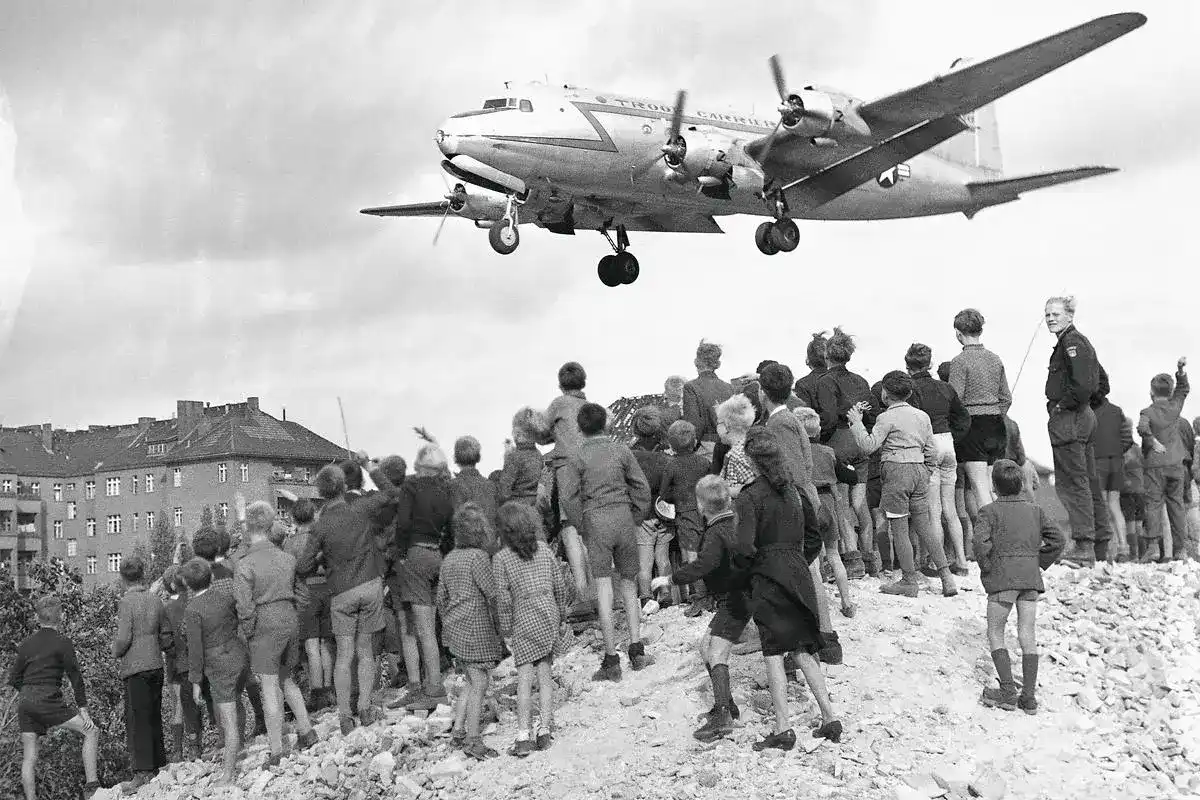
The first crisis of the Cold War, the Berlin Crisis, started on June 24th when Soviet forces blockaded rail, road, and water access into the areas of Berlin that were controlled by Allies. This conflict, which was foreshadowed by growing animosity between the Soviet Union and France, Britain, and the U.S, would spin off into a conflict that would span all the way into the early 90’s. This conflict also helped spark the soon-to-be leaders of NATO to join forces.
The Second World War ended in 1945, and its end marked the beginning stages of the Cold War. The Allies struggled to determine what they should do with Germany and how they should divide the land within the borders. Eventually the country and the capital were divided between the four countries who helped fight against the Nazis: the United States, Britain, France, and the Soviet Union.
After WWII, many people who lived in Berlin didn’t have suitable housing. Bombing during the war left many of the buildings partially destroyed or in rubble. The economy of the country also suffered and was mainly held up by the black market. The food supply was another constant issue that loomed over the two and a half million Berliners. The division of the country would make remedying these issues even more difficult, but the Allies met consistently throughout the following years to try and help coordinate policy and rebuild between the four different sections of Germany.
On January 1st, 1947, the United States and United Kingdom combined their sections of Germany into Bizonia. This joining of the two territories allowed for reconstruction efforts to be more coordinated, but it also caused more tension to spark between the Soviets and the rest of the Allies.
In early 1948, France, the United Kingdom, and the United States secretly formed a plan to organize the German land they occupied into a new German state. When the Soviet Union learned of this plan, they withdrew from the Allied Control Council. Prior to this, they had been regularly meeting with the Allied Forces.
In June of 1948, Britain and the U.S. introduced a new currency – the Deutschmark – into Bizonia and West Berlin to wrench control away from the Soviets and start cutting the black market out of the country’s economy. In response, on June 24th, 1948 the Soviets introduced the Ostmark in Soviet-controlled Germany and blocked off all major railways, roads, and canals that led into the city. This caused their portion of Berlin to be cut off from all incoming food and coal. The electricity was also cut, leaving the citizens in the dark.
In response, America and Britain made a plan so they could continue to support the citizens within Berlin. The troops in the blockade greatly outnumbered those in the armies of the U.S and Britain, and a head-on assault after the biggest conflict in history would continue to wear down the supplies they had left. The Soviets hadn’t blocked their airways, which allowed the U.S. and Britain to begin airdrop missions allowing necessary supplies to reach the Allied sectors of Berlin through Operation Vittles. This operation is the largest aerial resupply mission to ever occur.
The beginning of the operation was daunting. Over 2 million Berliners needed food, coal, medicine, and other necessary supplies to live. Throughout the coming months, however, the operation was able to grow in efficiency, at one point delivering the equivalent of 600 railroad cars of coal on Easter Sunday of 1949.
The Allies also put up a counter-blockade to restrict the food and resources coming into eastern Germany. This, along with the failure of the Soviet blockade, began causing unrest in East Germany. This made the USSR lift their blockade on May 12, 1949, out of fear of political upheaval. While the Berlin Airlift would continue until September 10 – in case the USSR decided to reinstate the blockade – the conflict itself would signal the beginning of the ideological unrest that would plague Europe throughout the coming decades.
As a result of this conflict, NATO was founded as a defensive organization against Soviet expansionism and the revival of nationalist militarism in Europe. NATO was officially founded on April 4, 1949, towards the end of the blockade.
Mt. Soledad National Veterans Memorial strives to tell the stories of our past to honor those who fought for the freedoms we experience today. Our plaques tell the stories of the many veterans who have served our country. Come visit our memorial and learn more about their histories and influences on our country.